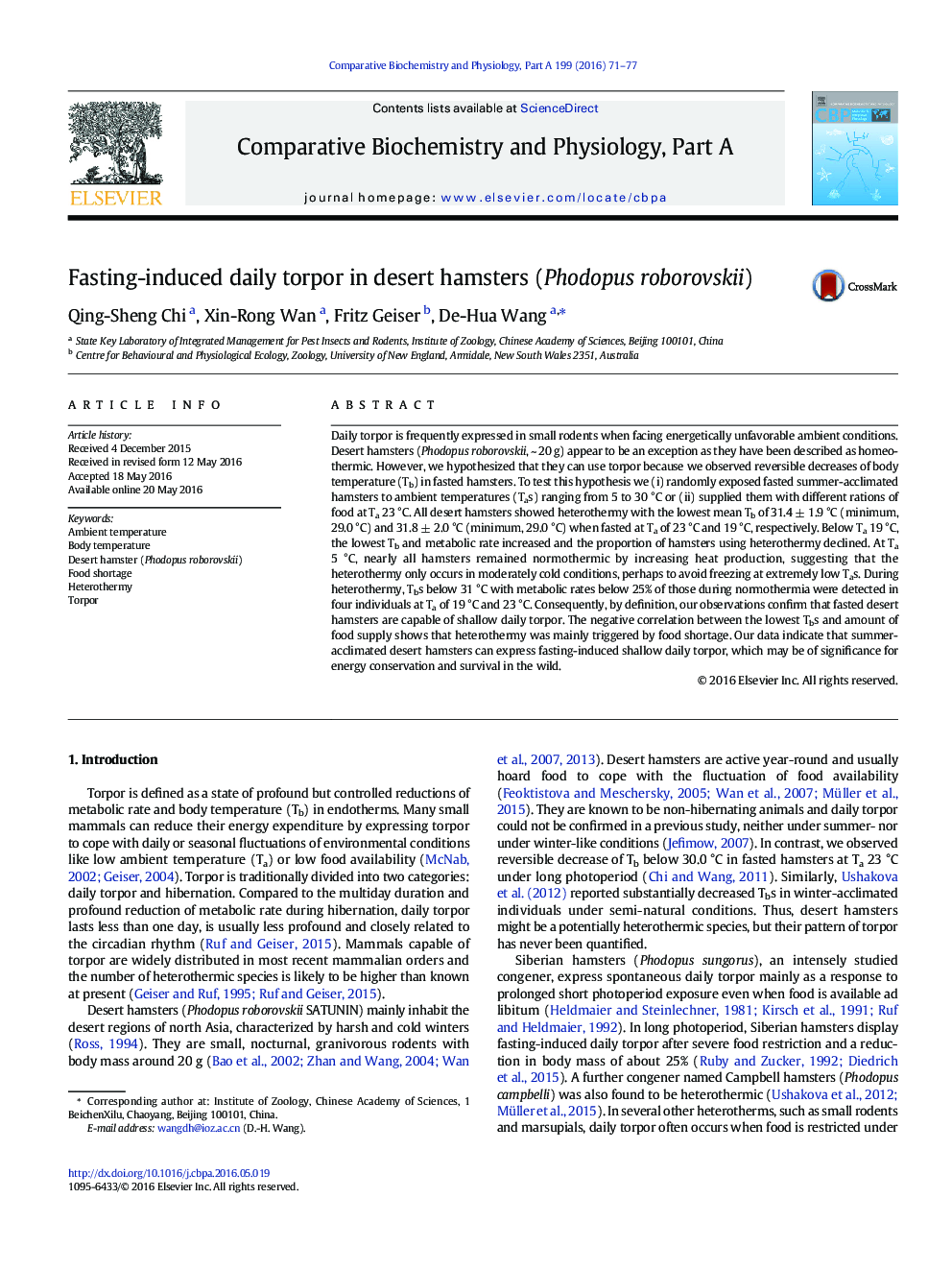| Article ID | Journal | Published Year | Pages | File Type |
|---|---|---|---|---|
| 1971805 | Comparative Biochemistry and Physiology Part A: Molecular & Integrative Physiology | 2016 | 7 Pages |
Daily torpor is frequently expressed in small rodents when facing energetically unfavorable ambient conditions. Desert hamsters (Phodopus roborovskii, ~ 20 g) appear to be an exception as they have been described as homeothermic. However, we hypothesized that they can use torpor because we observed reversible decreases of body temperature (Tb) in fasted hamsters. To test this hypothesis we (i) randomly exposed fasted summer-acclimated hamsters to ambient temperatures (Tas) ranging from 5 to 30 °C or (ii) supplied them with different rations of food at Ta 23 °C. All desert hamsters showed heterothermy with the lowest mean Tb of 31.4 ± 1.9 °C (minimum, 29.0 °C) and 31.8 ± 2.0 °C (minimum, 29.0 °C) when fasted at Ta of 23 °C and 19 °C, respectively. Below Ta 19 °C, the lowest Tb and metabolic rate increased and the proportion of hamsters using heterothermy declined. At Ta 5 °C, nearly all hamsters remained normothermic by increasing heat production, suggesting that the heterothermy only occurs in moderately cold conditions, perhaps to avoid freezing at extremely low Tas. During heterothermy, Tbs below 31 °C with metabolic rates below 25% of those during normothermia were detected in four individuals at Ta of 19 °C and 23 °C. Consequently, by definition, our observations confirm that fasted desert hamsters are capable of shallow daily torpor. The negative correlation between the lowest Tbs and amount of food supply shows that heterothermy was mainly triggered by food shortage. Our data indicate that summer-acclimated desert hamsters can express fasting-induced shallow daily torpor, which may be of significance for energy conservation and survival in the wild.
